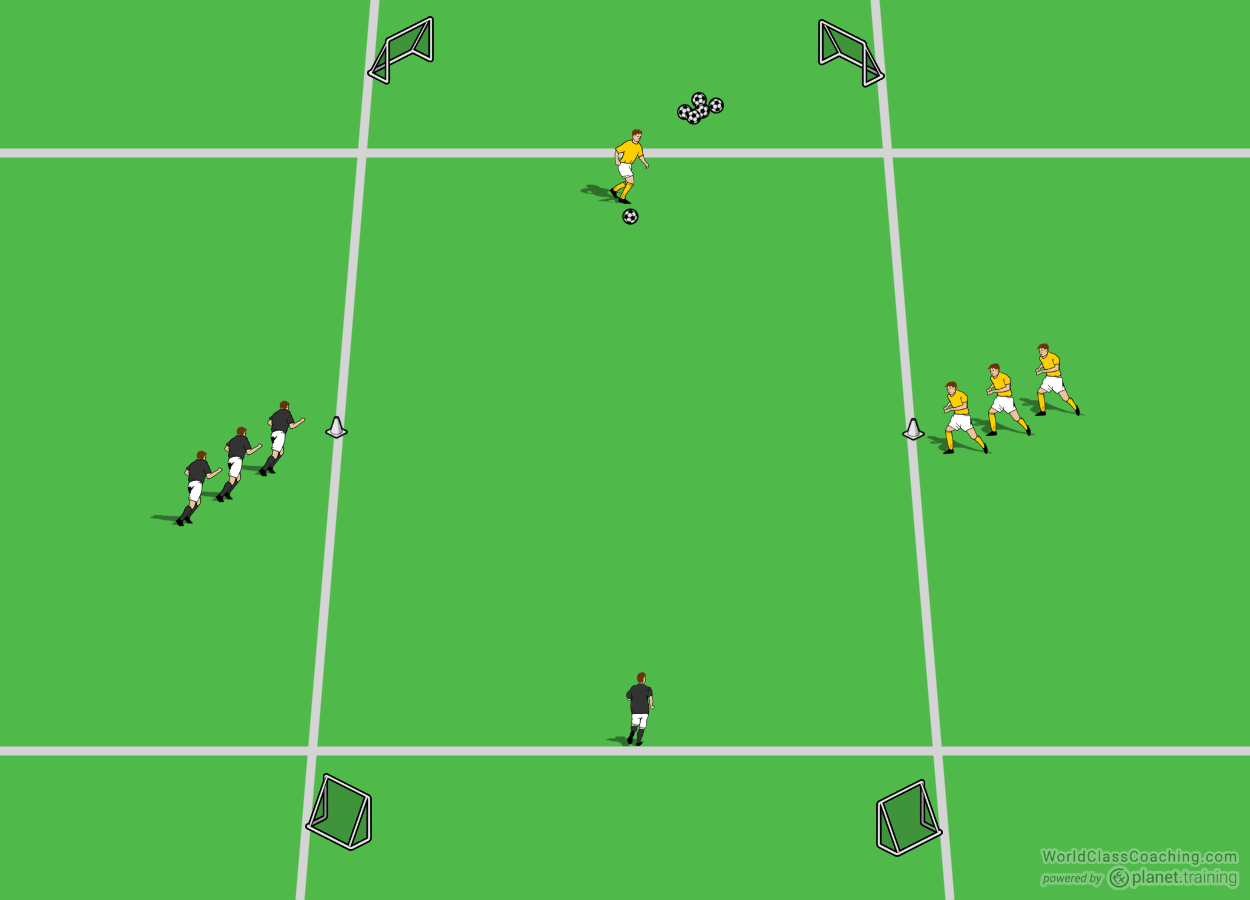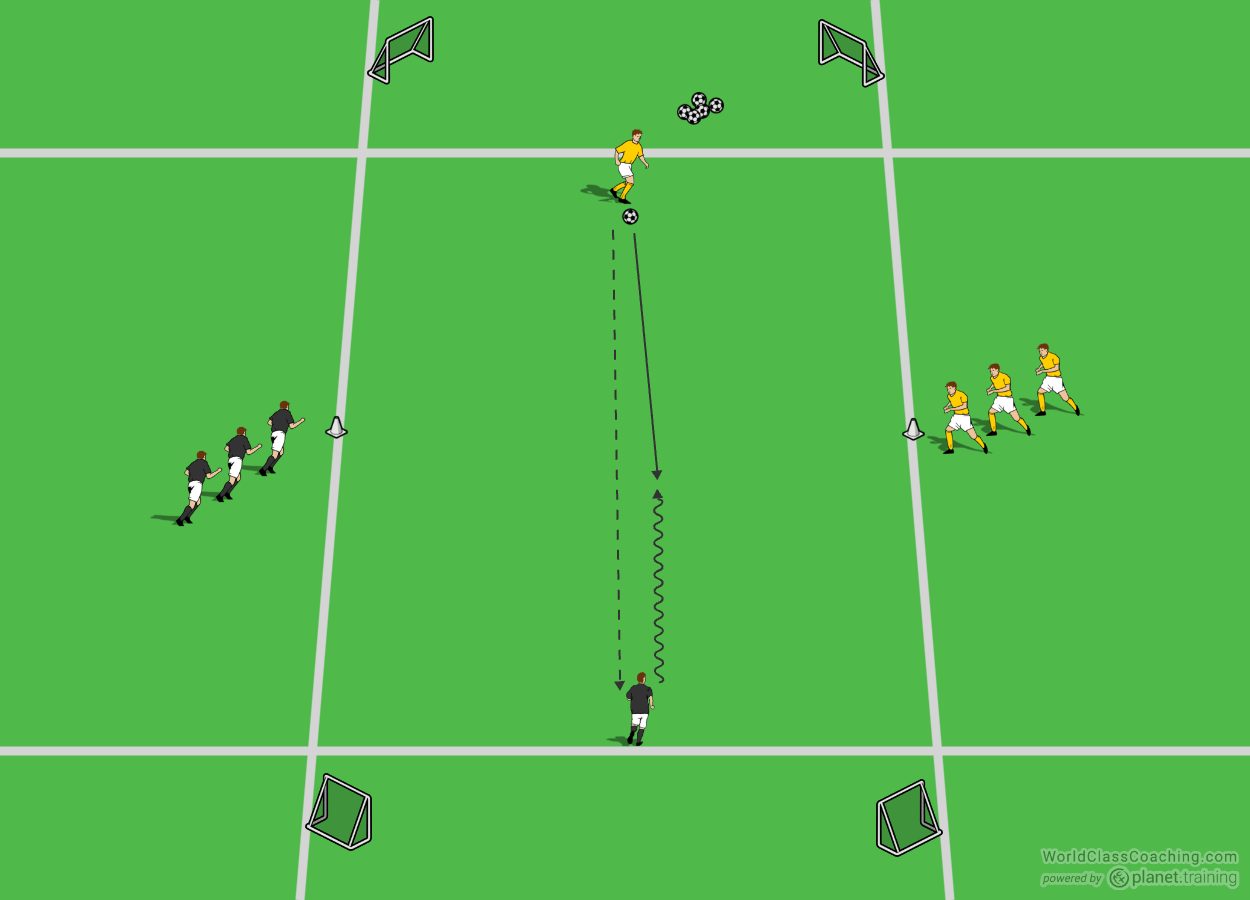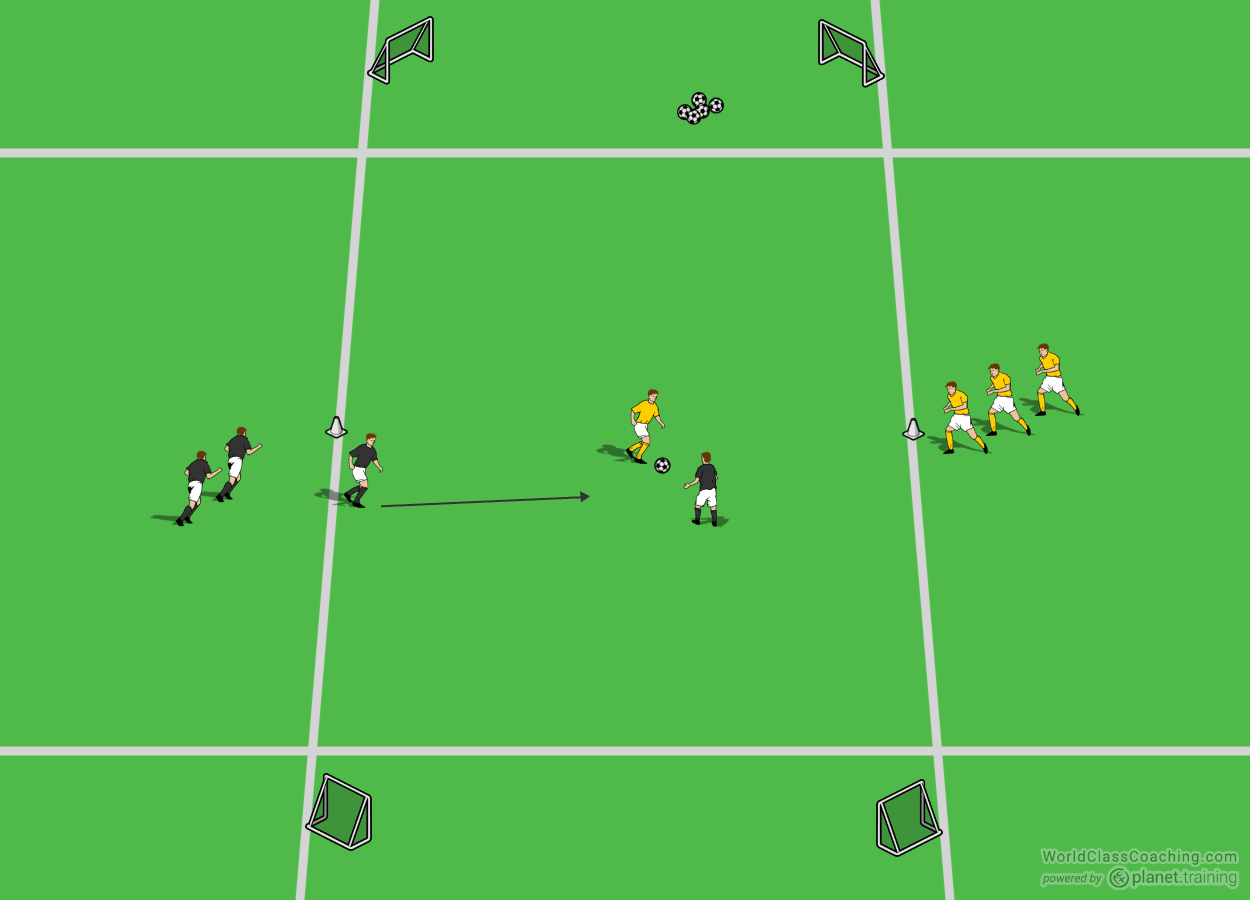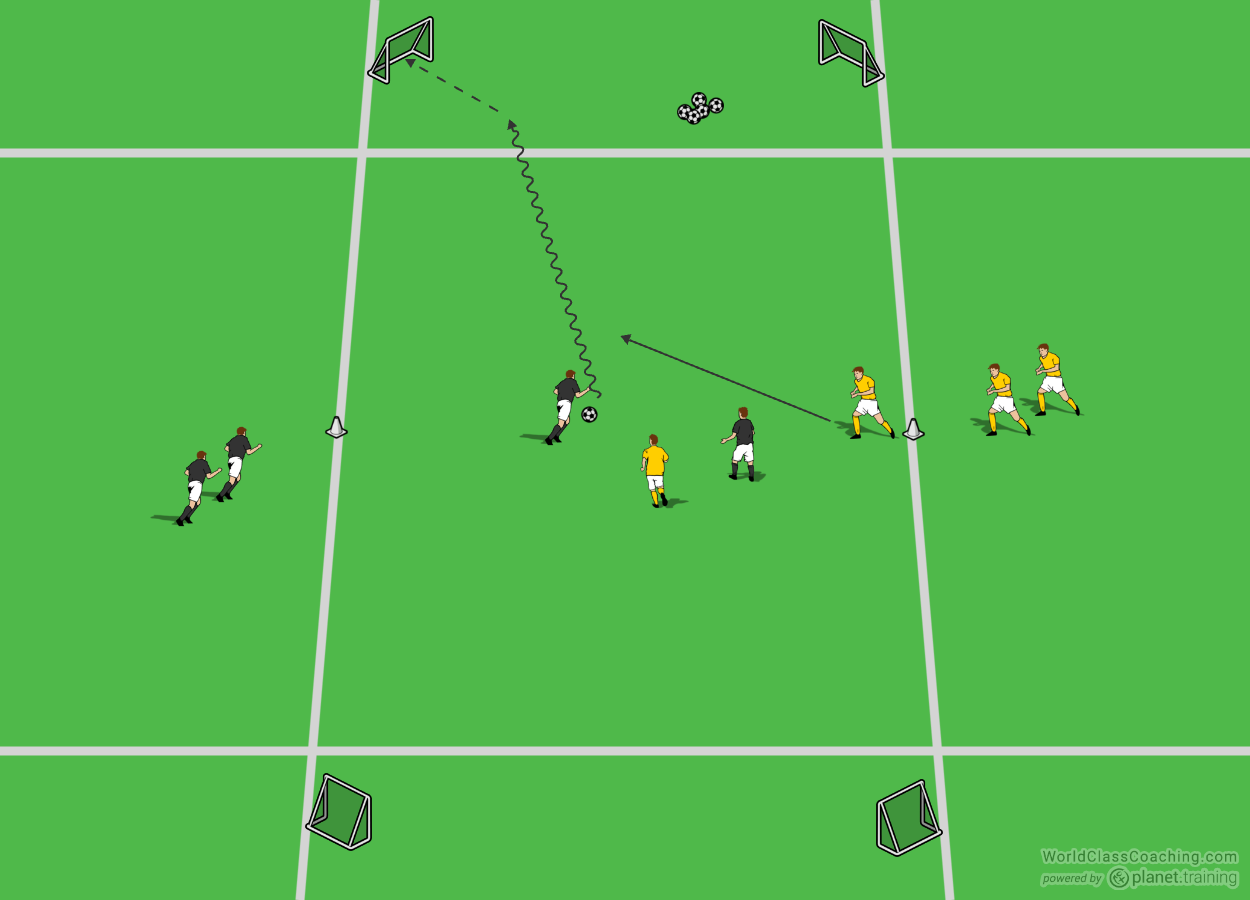By Alex Trukan
This game is focused on developing anaerobic energy system which is responsible for high intensity, short actions during the match. It is especially important in transition phases when every second counts. Both in transition to defence and attack, speed of reaction is crucial. This practice challenges players to make quick decisions upon winning/losing possession as well as produce high intensity, quick movements to get away from the opposition and score.
Set-Up and directions
Organise a channel of 15 x 30 yards. Place two small goals at two opposite ends of the area, 5 yards behind the end line. Divide the team into two groups – attackers and defenders. Both groups should be positioned opposite each other on the cones in the middle of the channel, on the side lines as shown on the diagram below. First defender and first attacker from the group should start opposite each other at the end lines. Defender starts with the ball. Prepare a sufficient supply of balls to ensure flow of the practice.

The game starts with the defender passing the ball into attacker and closing him down. The aim of the player in possession is to dribble past the opposite end line and score.

Every time a player loses the ball, one of his teammates can join in to help. As we can see below, a player from the black team lost possession and his teammate came in to make it 1 v 2.

The players can join in every time transition happens until any of the team scores. It is important that player in possession dribbles past the end line before he scores in goal. The game restarts from 1v1 situation.

Timing
Each player should make 6-10 repetitions of the duel in 2-4 series. Each repetition should not last longer than 10 seconds. Rest between repetitions should be 10-20 seconds and between series – 4 minutes.
Variations
- Build up only to 2v2 situation
- Finish off one touch
- Medium/full sized goals at each end
By Alex Trukan, Development Coach, Nottingham Forest
@AlexTrukan


